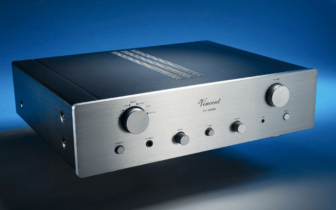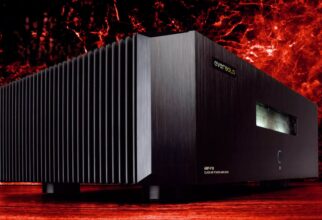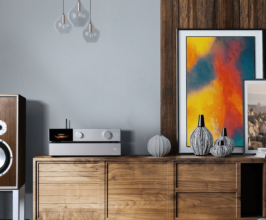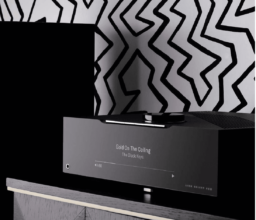DENON HOME AMP Review
Now that Sonos is struggling with its popularity, competitors have a golden opportunity to steal customers. Is the Denon Home Amp the answer to our prayers?
If you’ve long been tired of large amplifier boxes but aren’t quite ready to switch to small wireless speakers, a hybrid solution could be perfect. Keep your speakers – or buy new ones – and let a streaming amplifier bring you into the modern age.

For example, the Denon Home Amp. This is a more affordable version of the Model M1 from its sister brand Marantz. However, the Denon amplifier isn’t exactly cheap either, so you’d expect it to deliver the goods.
CHALLENGING SONOS
In this world, Sonos has long been the king, while others have fought over the crumbs. But that may be changing now, especially after a recent app update went horribly wrong for the American manufacturer. Many users report issues like products no longer connecting, lost playlists, and various other problems. While Sonos struggles to stay afloat in the sea of user-friendliness, competitors like Denon have a chance to steal significant market share.
Like its rival, the Sonos Amp, Denon Home Amp is a small stereo amplifier that, despite its compact size, is said to output 2 x 100 watts thanks to efficient Class D amplification. While this isn’t new, if you’ve just emerged from your old hi-fi cave with heavy toroidal transformers, you might be skeptical when I tell you that this little amplifier can power a pair of proper speakers quite well. Within certain limits.
CONNECTIONS
In terms of connections, the Home Amp has most of what you need, including HDMI eARC for easy TV audio. Bluetooth support and an optical input are also present – features that the Sonos Amp lacks. On the touch panel at the front, you can control the volume and skip tracks. There are also three shortcut buttons, which can be used for favorite playlists or radio stations. You decide.
The build quality is not quite what I expect from this amplifier price. The plastic casing feels a bit cheap compared to more solid competitors like the Marantz Stereo 70s and Yamaha A-S701. Design-wise, the Denon amplifier also doesn’t appear as elegant as the Sonos Amp, although both have a similar build quality.
Given that the Home Amp actually costs a bit more than the Sonos Amp, the Denon amplifier must offer something extra where it matters most: sound quality.
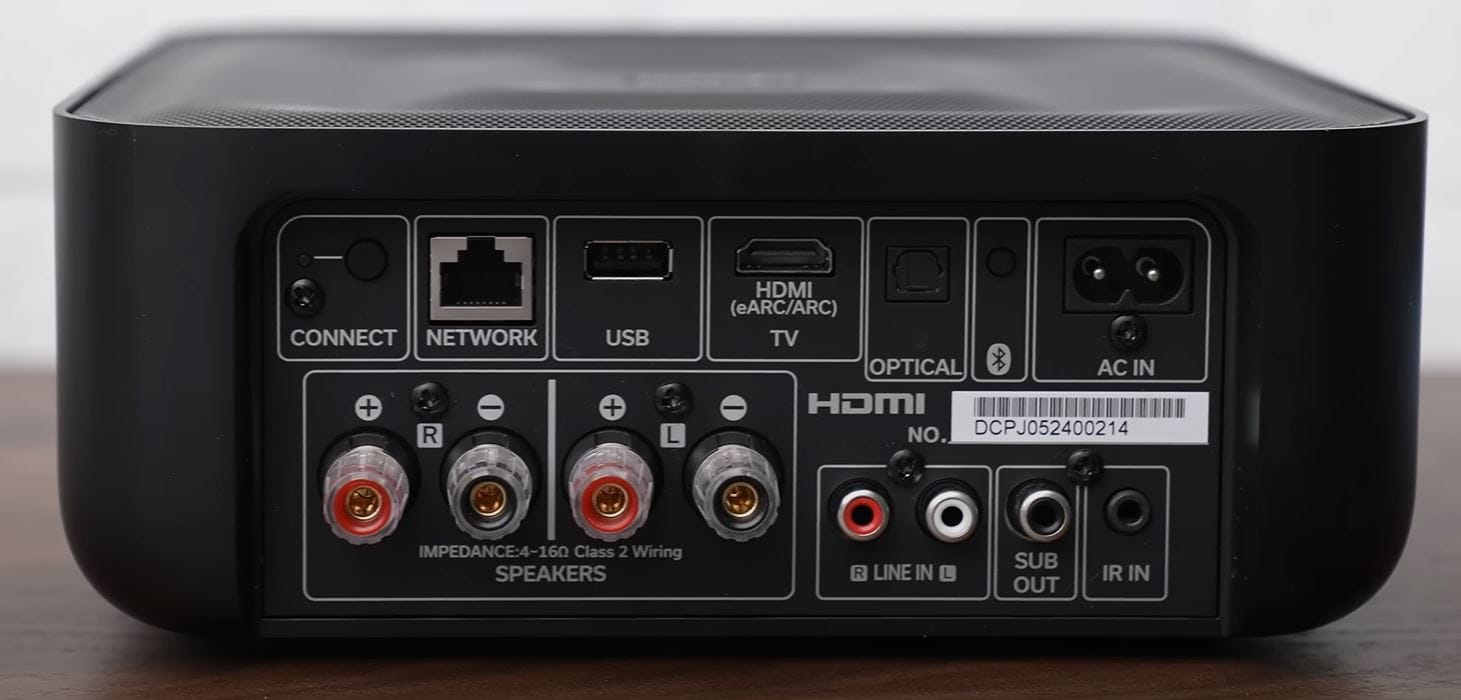
HEOS STREAMING
The digital streaming task is handled by the built-in HEOS system. This was developed by engineers at Denon and Marantz and has since been incorporated into products from several brands under the parent company Masimo. Both Classé and Definitive Technology have products that support HEOS, and more are likely to come. This means they can all connect wirelessly on the same network and work seamlessly together, just like a group of Sonos products.
The HEOS app provides access to a range of music services, including Spotify, Deezer, Tidal, SoundCloud, and internet radio. With Spotify Connect, you can even use the Spotify app directly on your phone while the streaming continues inside the amplifier. HEOS doesn’t offer as many services as Sonos, which also includes audiobook and podcast services, as well as Qobuz, Apple Music, and Amazon Music. If you want to use any of these with the Denon Home Amp, you’ll need to stream via Bluetooth or AirPlay 2.
EASY SETUP
The setup is simple: Connect the power, download and open the HEOS app, and select Denon from the list of manufacturers. Then choose the amplifier, and the Home Amp will appear in the list. From there, the connection is fast and hassle-free.
Setting up the Sonos Amp is much more drawn-out and boring, especially nowadays when the app seems to have a life of its own. I had to give up and eventually use AirPlay to compare the sound.
HOW DOES THE DENON HOME AMP SOUND?
Sound-wise, the Home Amp delivers a clean and detailed performance. The stereo image is precise, and vocals are clearly presented. The 2L recording of “Tuvayhun” sounds spacious, and there’s a distinct separation between the girl on the left and the woman on the right in “Rachel’s Song.”
However, I definitely remember hearing a deeper soundstage from the same speakers, the Bowers & Wilkins 603 S3. Compared to competitors like the Bluesound PowerNode N330, the sound still feels a bit thin, especially in the bass range. Double basses lack some of the physical presence you get with more expensive amplifiers. In this area, the Denon Home Amp is outclassed by its sister model, the Marantz Model M1, and especially the Bluesound PowerNode N330.
There’s good energy in the rhythms of “About Damn Time,” and I can feel the beat moving my feet. But again, it’s not as rhythmic as with the Bluesound PowerNode N330, and the Denon doesn’t pull ahead of the Sonos Amp either. I really wish it did, considering the higher price. In fact, it’s hard to hear much difference between the two amplifiers, no matter how much I try. Sound-wise, it hardly matters which one you choose.
WORTH THE MONEY?
The Denon Home Amp is certainly a capable amplifier with good features and user-friendliness. But it’s still hard to justify the price. It costs more than the Sonos Amp, and you only need to spend a few hundred more to afford the Bluesound PowerNode N330, which outperforms both.
Therefore, I would mainly recommend the Denon Home Amp to those who already have HEOS products and want to expand their system. For everyone else, there are better options for the money. Ideally, the amplifier should have cost less than the Sonos Amp, in which case the recommendation would be more wholehearted.
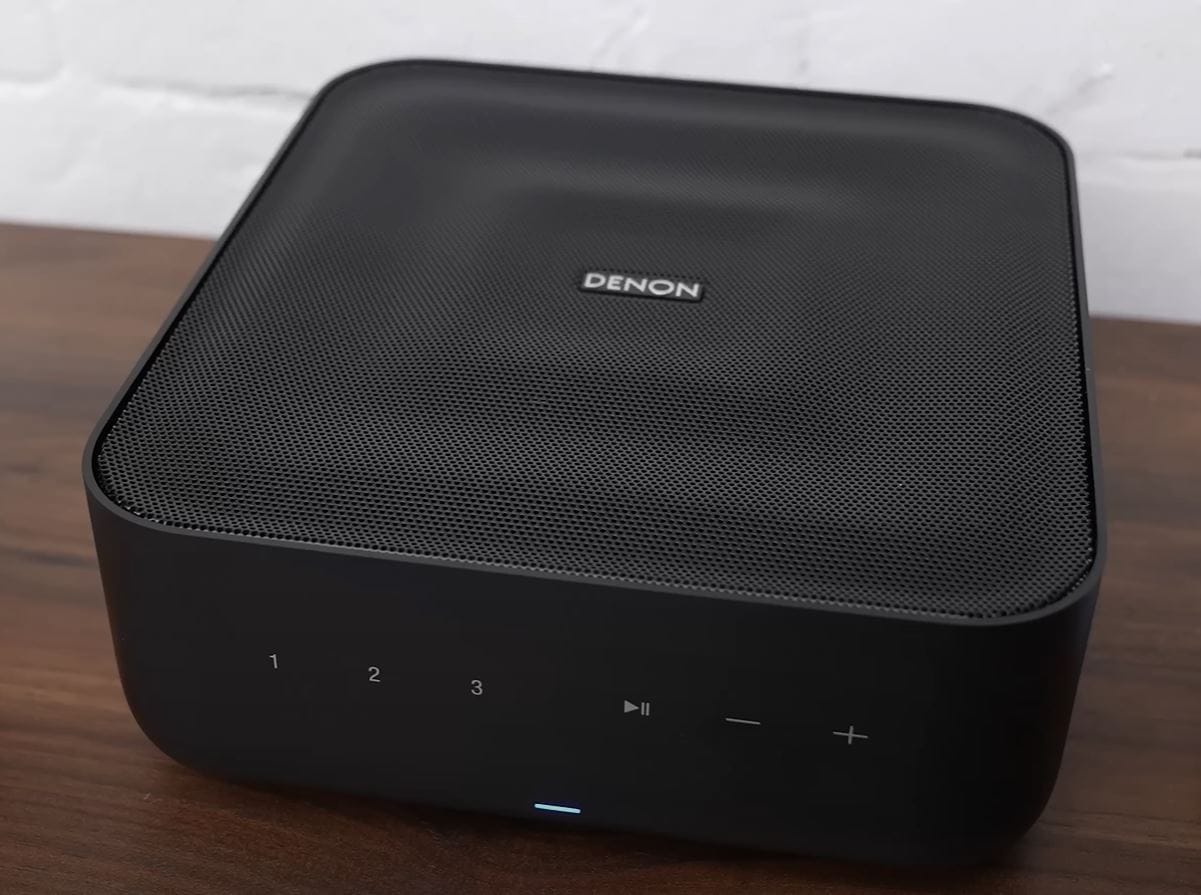
If you want HEOS streaming, another exciting alternative might be the Denon AVR-X2800H home theater receiver, which costs about the same. It’s not nearly as stylish as the Home Amp and is designed for a completely different audience. But it sounds good in stereo, has a remote control, and can give you a full 7-channel surround system with Dolby Atmos. It also has built-in Audyssey room correction, which offers greater flexibility when placing speakers in the room.
All in all, the Denon Home Amp is a solid amplifier with seamless streaming and good functionality. But in a highly competitive market, its price/performance ratio isn’t quite where I’d like it to be.
SPECIFICATIONS:
| Type | Stereo Amplifier |
| Rated Output | 100 W + 100 W (8 Ω, 20 Hz – 20 kHz) |
| 125 W + 125 W (4 Ω, 1 kHz) | |
| Frequency Response | 20 Hz – 40 kHz ±3 dB |
| Signal-to-Noise Ratio (S/N) | 105 dB (Optical IN, HDMI IN ARC/eARC) |
| 91 dB (Line IN) | |
| Input Sensitivity | 200 mV/20 kΩ (LINE IN) |
| Wireless Connectivity | Wi-Fi (IEEE 802.11 a/b/g/n/ac) |
| Bluetooth | Bluetooth 4.2 (approx. 30 m range) |
| HDMI | HDMI eARC for audio return from TV |
| USB Input | Yes, for direct connection of devices |
| Multi-Room Audio | HEOS Built-in for streaming and control |
| Streaming Services Supported | Spotify, AirPlay 2, Amazon Music HD |
| Dimensions | 9.1″ W x 4.8″ H x 12.8″ D (231 x 122 x 325 mm) |
| Weight | 4.4 kg (9.7 lbs) |
CONCLUSION
The Denon Home Amp is a competent streaming amplifier that is user-friendly and sounds good. It provides frustrated Sonos users an exit from the ecosystem, and even when Sonos eventually returns to where they should be, you’ll have a good alternative in the Denon amplifier.
The price of the Denon Home Amp is lower than its relative, the Marantz Model M1. Still, I think it’s on the high side. You can get warmer and even more controlled sound elsewhere for the same money, without compromising on user-friendliness. The Denon amplifier also doesn’t sound better than the Sonos Amp, which it aims to compete with. Therefore, the Home Amp is mainly recommended for existing HEOS users or those specifically looking for its unique features. For others, alternatives like Bluesound or even Sonos offer better value for the money. As it stands now, the Home Amp is a solid but costly option in a highly competitive market.
When you purchase through links on our site, I may earn an affiliate commission. Here’s how it works.
Denon Home Amp: Small Amp, Large Features - 2 Ch. 100W Amplifier with HEOS Built-in
Looking for a compact but powerful amplifier for your favorite music, and with HDMI eARC, your favorite TV shows or movies?






